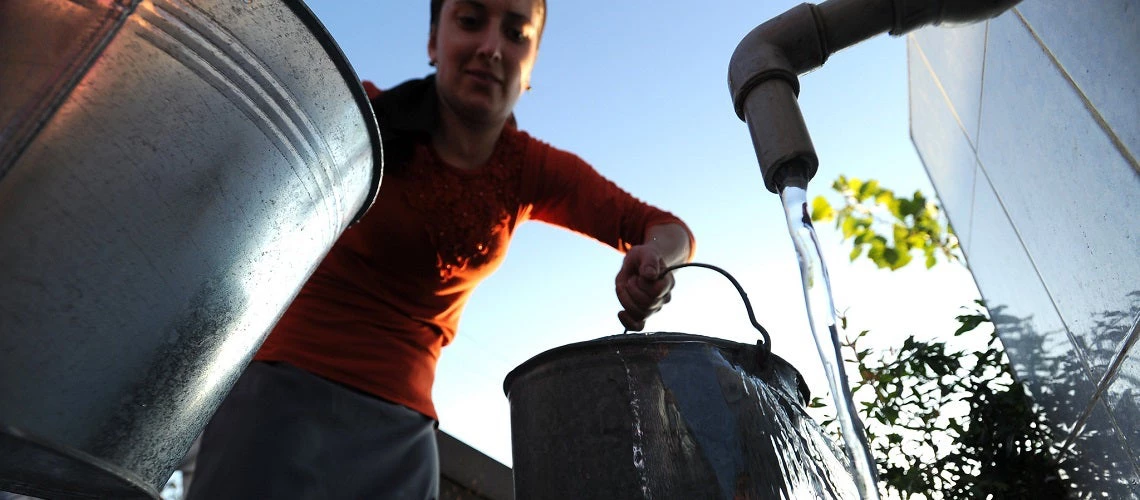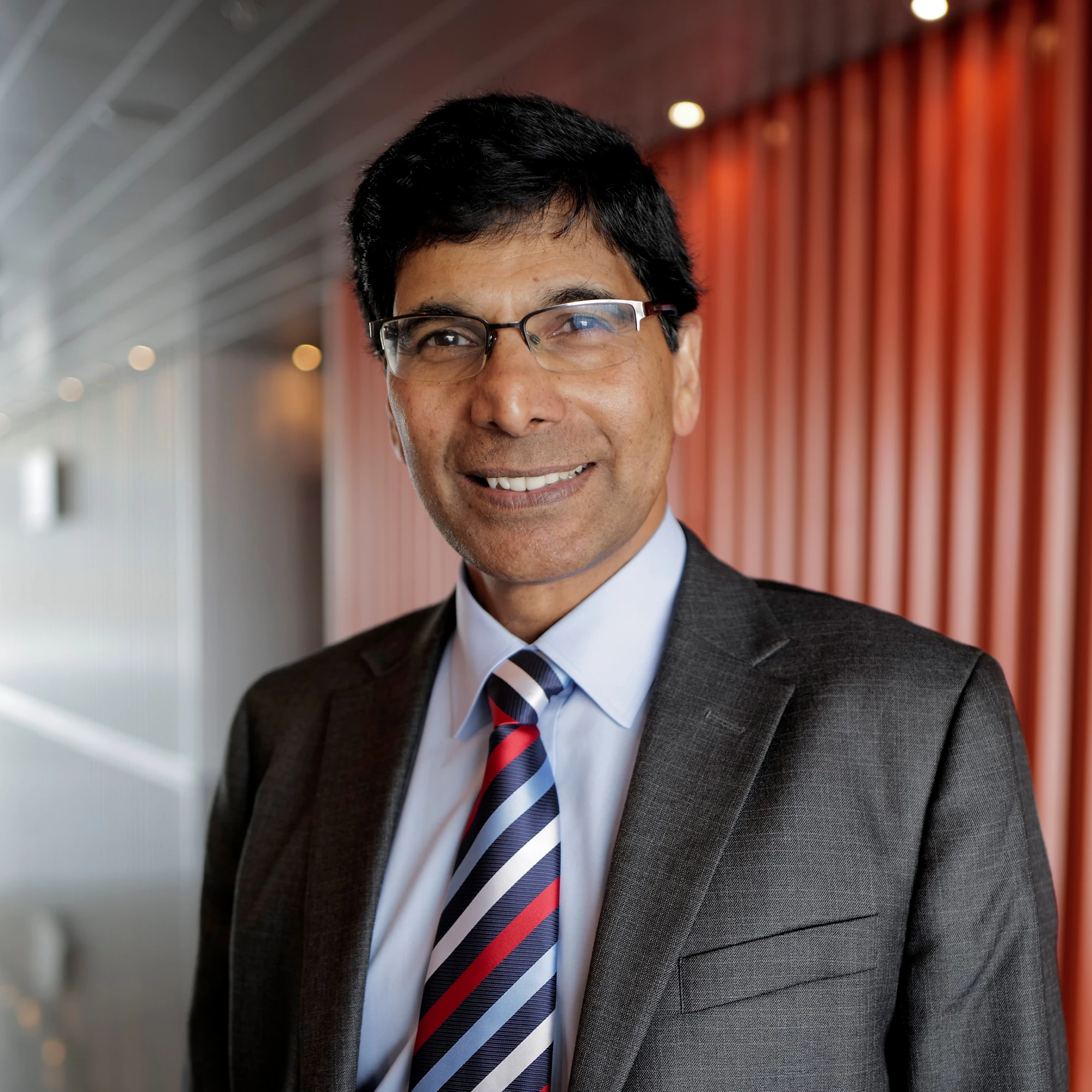 Women filling up two metal buckets of water with an open faucet.
Women filling up two metal buckets of water with an open faucet.
We know all too well that the multiple crises facing the world – food insecurity, energy access, global health, conflict and climate change – have disproportionate impacts on the most vulnerable. The frightening reality is that these crises are also splintering our efforts to address critical social development challenges, such as the stubborn gaps that exist between women and men. At the current rate, we will need 286 years to close gaps in legal protection and 169 years to reach gender parity in economic participation and opportunity. This is decades longer than we have to curb the worst impacts of climate change.
The climate crisis is not gender neutral. Its impacts are more severe in developing countries for women and girls, further amplifying structural inequalities, and posing unique threats to women’s health, safety, and livelihoods. Women often bear a disproportionate responsibility for securing food, water, and fuel, tasks that become more challenging in contexts of environmental degradation. The most important employment sector for women in low- and lower-middle income countries is agriculture, and during periods of drought, women work even harder to secure income to support their families. Added pressure is placed on girls, who respond by leaving school to help their mothers manage increased burdens.
These interlinkages mean that social inclusion and climate action cannot be addressed sequentially, nor in isolation. Now – perhaps more than ever – it is vital that we leverage climate finance to drive simultaneous, often mutually reinforcing, gender and climate goals. Meeting the colossal challenges posed by the climate crisis, while also ensuring sustainable growth, represents a timebound opportunity to drive an inclusive transition that reduces gender inequality.
"Meeting the colossal challenges posed by the climate crisis, while also ensuring sustainable growth, represents a timebound opportunity to drive an inclusive transition that reduces gender inequality."
But how can we achieve this?
At the Innovate4Climate conference in May, the International Finance Corporation (IFC), the World Bank, and the Climate Investment Funds (CIF) convened to highlight emerging gender-smart climate finance innovations that hold promise for securing a more inclusive climate-friendly future. The bottom line was clear: we must identify and scale climate finance solutions that also deliver progress on gender equality. Four initiatives were discussed:
- Women-Led Coal Transitions (WOLCOT). Under the Accelerating Coal Transition Investment Program (ACT) of the CIF, WOLCOT is the first-of-its-kind with aims to amplify the voices of women and disadvantaged groups in coal transition-affected communities. While formally employed miners are most directly impacted by the coal transition, the most insecure workers are often women, indigenous peoples, migrant workers, and persons with disabilities. These groups are most likely to be overlooked in transition planning, reinforcing pre-existing forms of social exclusion. WOLCOT aims to support communities and organizations working on the rights of women and other disadvantaged groups to translate local needs and preferences into investments and policies supported under the ACT program.
- Climate Gender Equity Fund (CGEF). A partnership between Amazon and USAID announced at COP27, CGEF is another pioneering program. It will provide direct grant funding to climate-smart women-led and women-benefitting businesses and investment vehicles. The grant-based approach of CGEF seeks to fill the significant financing gap that exists for early-stage enterprises, which typically require startup capital and technical assistance to bring solutions to scale. Funding will support women-led businesses, as well as incubators, accelerators, networks, and community-based organizations working in support of climate and inclusion goals.
- Clean Impact Bond (CIB). The ecosystem for private investment is also expanding and innovating. IFC, in partnership with Cardano Development, BIX Capital, the Osprey Foundation, and Sistema.bio, is pioneering the CIB. This bond provides working capital to small and medium enterprises (SMEs) that manufacture and distribute climate-smart household appliances to low-income households in Sub-Saharan Africa. These SMEs, which often face challenges scaling their businesses due to limited access to finance, repay their loans by quantifying and selling gender and health credits. These credits are generated by household use of climate-smart appliances, such as clean cookstoves, and then sold to outcome buyers. This can decrease women’s and girls’ time poverty, improve their health, and benefit the environment by reducing greenhouse gas emissions and deforestation.
- Sustainability-linked finance (SLF). Comprising both sustainability-linked loans and bonds, this instrument increasingly includes gender key performance indicators (KPIs). These KPIs incentivize the pursuit of ambitious gender targets by setting pricing contingent on their achievement. In Brazil, IFC’s ‘super green’ loan combines green use of proceeds with a sustainability-linked financing structure, under which Neoenergia Coelba – the third largest power distribution company in Brazil – has agreed to robust targets on emissions reductions and increasing gender workforce diversity in technical roles. If these targets are reached, Neoenergia will receive a step-down on the loan repayment rate to IFC.
Speeding up our timeline to gender parity by catalyzing gender-responsive climate solutions requires an all-hands-on-deck approach. We need early-stage support to help women-led enterprises climate-proof their businesses, as well as disruptive, bold solutions that engage local community stakeholders in climate adaptation and mitigation.



Join the Conversation